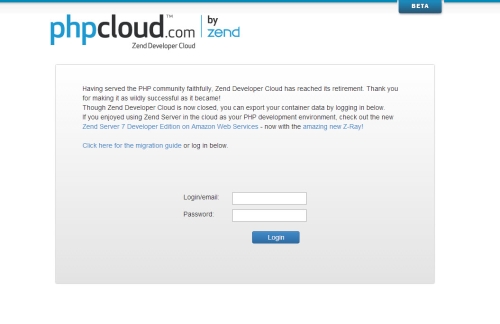![]()
To migrate from the Zend Developer Cloud:
-
Enter your Zend account credentials.
A list of your existing Zend Developer Cloud containers is displayed. - To export the data in a container, it needs to be stopped first. If a container is still running, click the stop link.
- Once your container is no longer running, click the export button.
Your request is submitted and a package with all the data in the container is prepared. The package will contain all your applications PHP code on specific container and other files on the application folder, the GIT repository and a database dump. - When ready, you will receive an email with a URL to the package. Click the URL to download the .zip file with the package.
- Access your AWS account or create a new one at https://aws.amazon.com/
- In the AWS Marketplace, launch a Zend Server Developer Edition AMI.
For detailed instructions on how to do this, go to Setting Up Zend Server on AWS. - Once your Zend Server is set up and launched, unzip your package and place the files on the web server’s document root.



